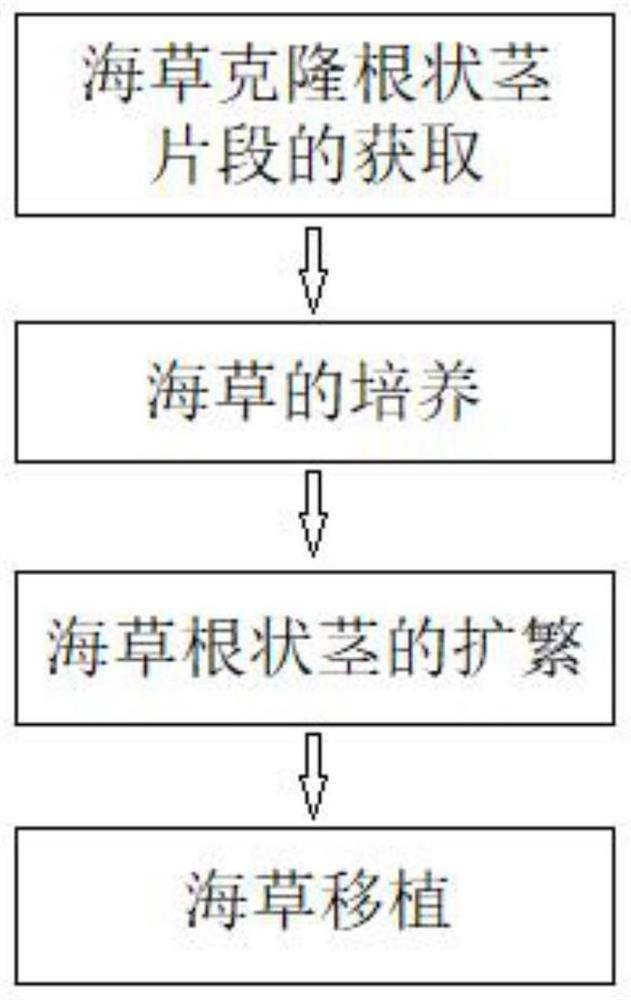A method of repairing seagrass beds
A repair method and seagrass bed technology, applied in the field of ecological restoration, can solve the problems affecting the donor seagrass population structure and genetic diversity, the seaweed seed germination rate, the seedling establishment rate, and the seed yield are low, so as to increase the survival rate of transplantation, The effect of shortening the time required for production and accelerating the growth rate
- Summary
- Abstract
- Description
- Claims
- Application Information
AI Technical Summary
Problems solved by technology
Method used
Image
Examples
Embodiment 1
[0049] Example 1 Restoration method of single-vein and two-herb seagrass beds
[0050] see figure 1 , The present invention provides a technical solution: a method for repairing a single-vein and two-herb seagrass bed, and the specific operation steps of the method are as follows:
[0051] a) Acquisition of cloned rhizome fragments of single-veined two herbs: In the distribution area of good growth of single-veined two herbs, rhizome fragments are excavated, and the obtained rhizome fragments are required to be unbranched and have continuous 3 to 4 healthy stems and branches. Only one rhizome segment was collected at each collection point, and the interval between collection points was not less than 1.0m. A total of 100 rhizome fragments were collected. The collected rhizome fragments of two herbs with single veins were placed in a foam box filled with seawater for temporary cultivation, and the temporary cultivation time did not exceed 7 days.
[0052] b) Cultivation of...
Embodiment 2
[0055] Example 2 Restoration method for the seagrass bed
[0056] see figure 1 , The present invention provides a technical solution: a method for repairing a seagrass bed of Cyperus serrata, and the specific operation steps of the method are as follows:
[0057] a) Acquisition of clonal rhizome fragments of S. serrata: In the distribution area of S. serrata in good growth, the rhizome fragments are excavated, and the obtained rhizome fragments are required to be unbranched, with There are 2 to 3 healthy stems in a row. Only one rhizome segment was collected at each collection point, and the interval between collection points was not less than 5.0m. A total of 50 rhizome fragments were collected. The collected rhizome segments were placed in a plastic box filled with seawater for temporary cultivation, and the temporary cultivation time did not exceed 10 days.
[0058] b) Cultivation of seaweed: The bottom of the cement tank with length×width×height=2.5m×2m×1.0m is cover...
PUM
 Login to View More
Login to View More Abstract
Description
Claims
Application Information
 Login to View More
Login to View More - R&D
- Intellectual Property
- Life Sciences
- Materials
- Tech Scout
- Unparalleled Data Quality
- Higher Quality Content
- 60% Fewer Hallucinations
Browse by: Latest US Patents, China's latest patents, Technical Efficacy Thesaurus, Application Domain, Technology Topic, Popular Technical Reports.
© 2025 PatSnap. All rights reserved.Legal|Privacy policy|Modern Slavery Act Transparency Statement|Sitemap|About US| Contact US: help@patsnap.com



